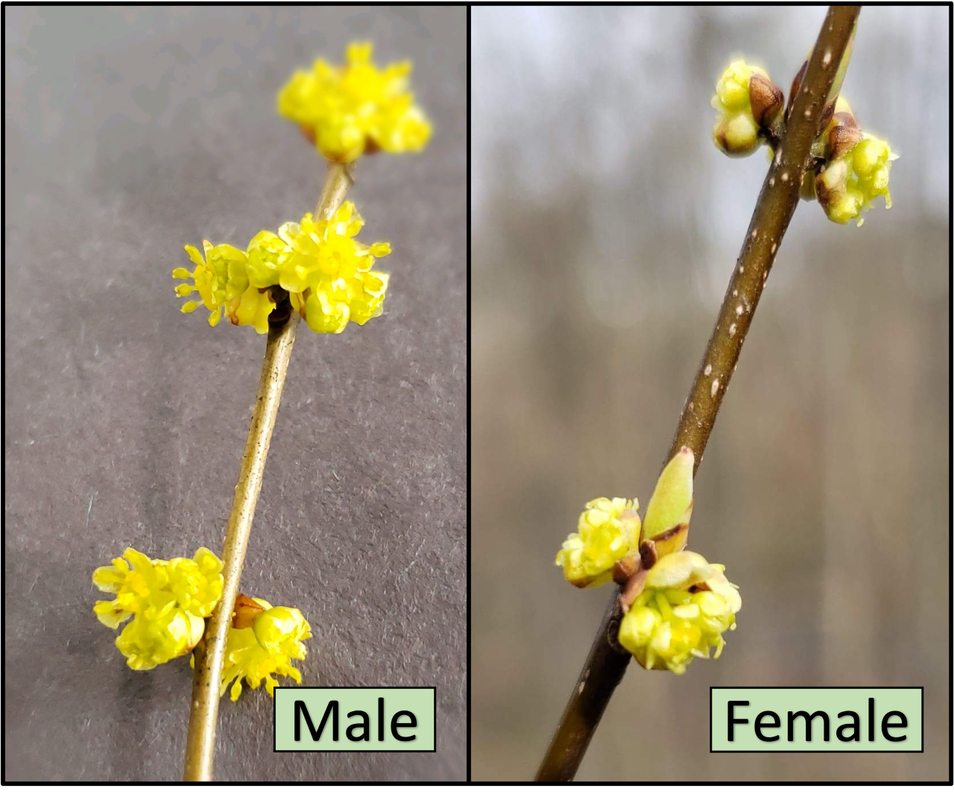When spicebush is in bloom, a close look at one of these blossoms will reveal all! Male flowers are larger, and each stamen has two anthers that emerge from the end of the filament. Female flowers are noticeably smaller, with white spots (stigma) at the end of the pistil.
(more photos: https://awesomenativeplants.info/…/pho…/lindera_benzoin.html)
Easily grown in full sun to partial shade, in average well-drained soils, this medium sized shrub grows 6-12’ in an attractive regular shape. Its leaves have a delightfully spicy scent when crushed. A shrub for all seasons, spicebush turns an attractive warm yellow color in late autumn. And if that weren’t enough, it’s also the host plant for the adorable spicebush swallowtail caterpillar, which never fails to delight SBG visitors of all ages. These caterpillars, which can be found feeding on the foliage, resemble cartoonish snakes with their big false eyes that are used to deter predators. The caterpillar can also protect itself by rolling up in one of the sturdy leaves.
You’ll find one of our larger specimens along the paved path of the SBG, welcoming park visitors with its cheery yellow flowers and spicy scent. Consider adding a spicebush to your home landscape!
Photo: Emmett Keegan


 RSS Feed
RSS Feed